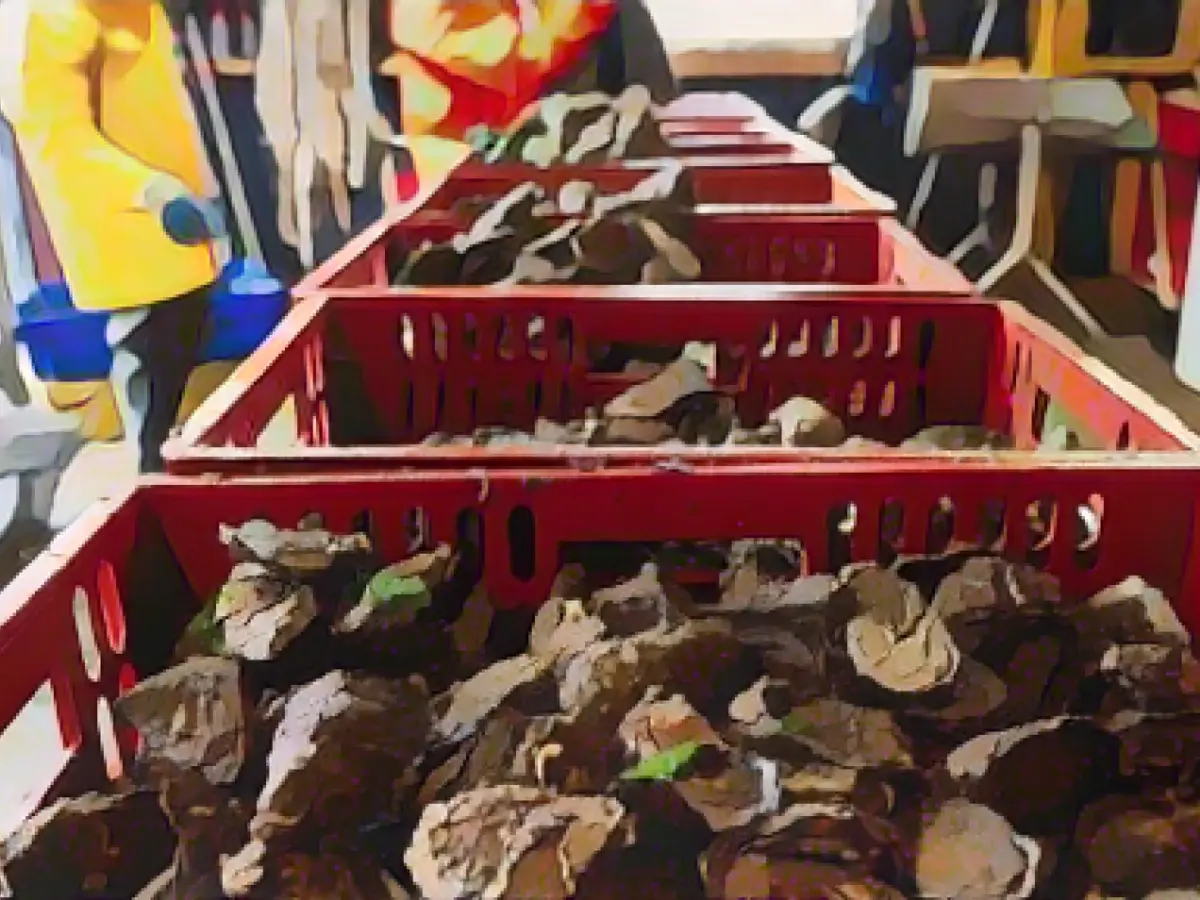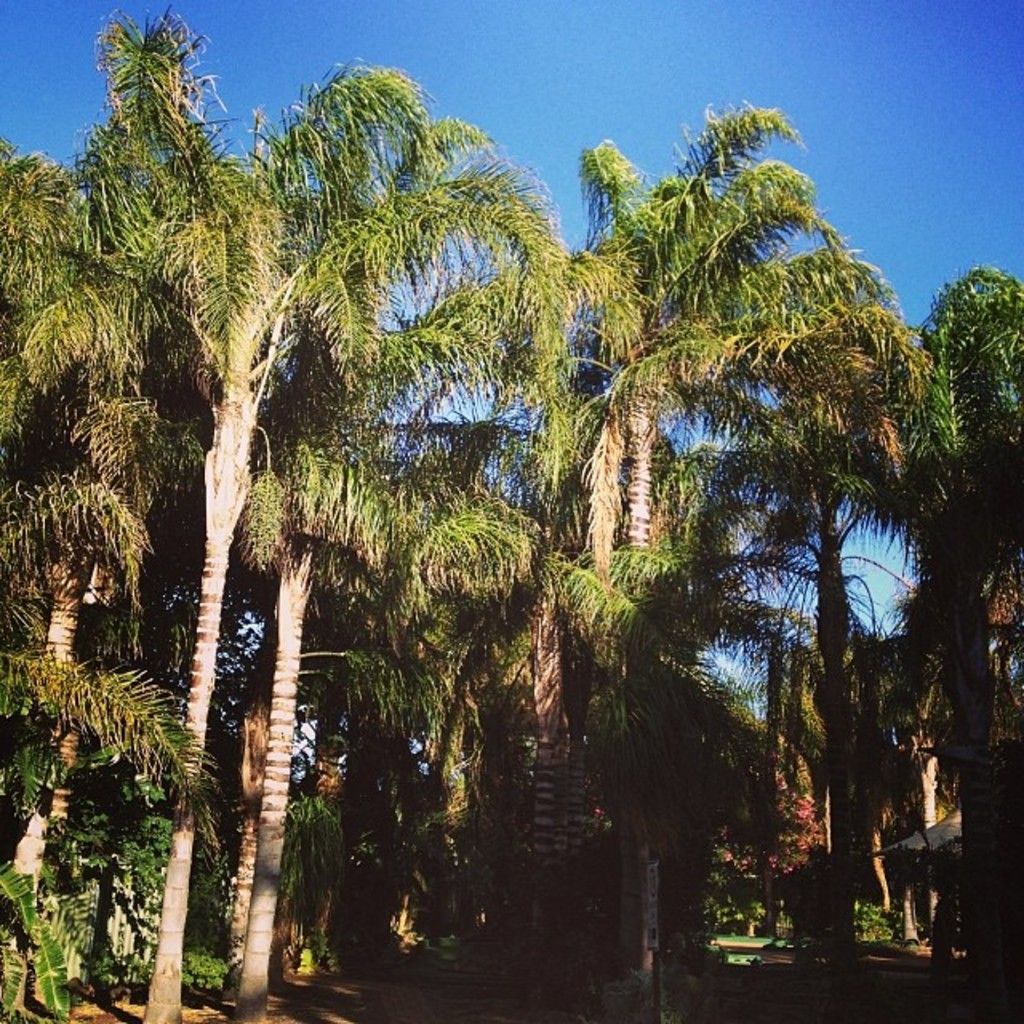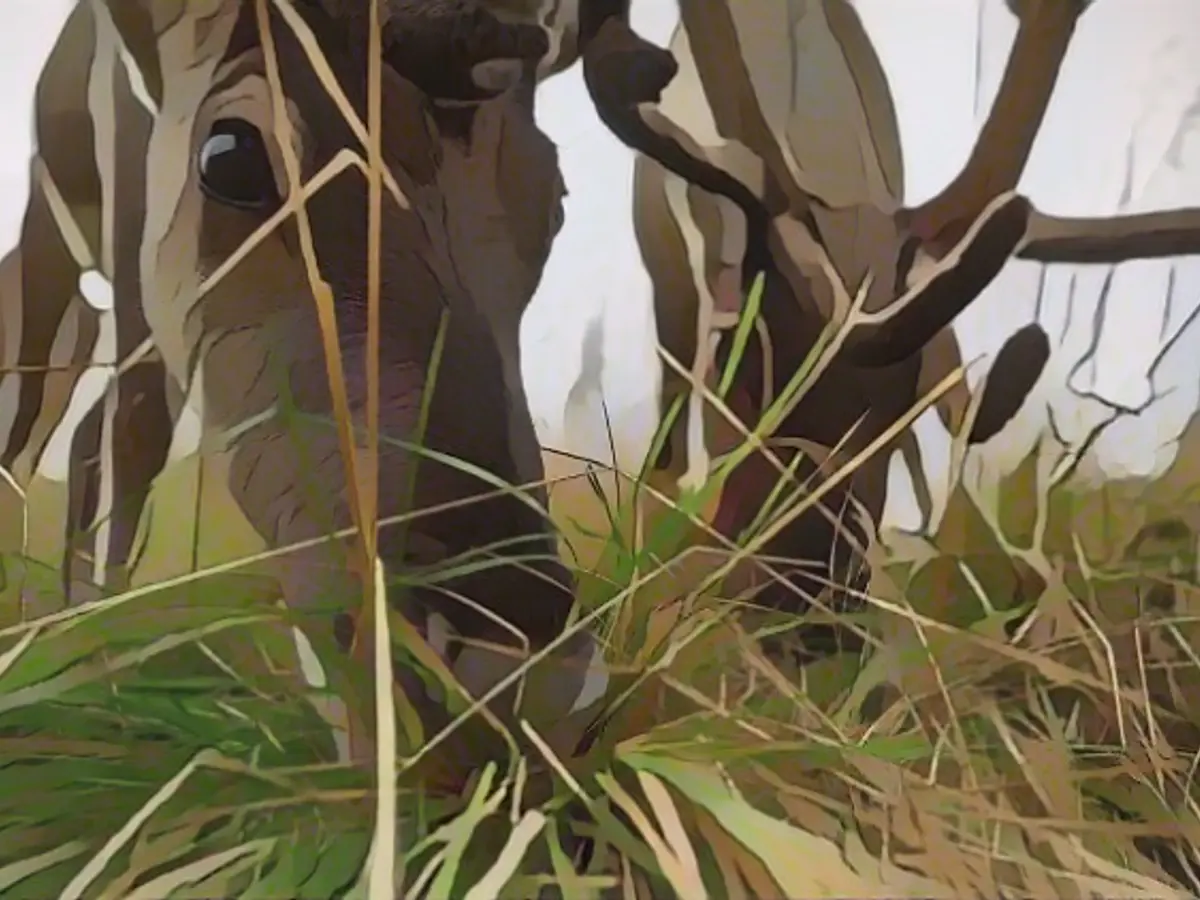Sylt's Oyster predicament: Overabundance and Winter Storage Dilemma
Every autumn, millions of oysters from the mudflats off Sylt's coast are brought ashore to winter storage in seawater tanks at Dittmeyer's Austern-Compagnie farm. However, as an additional 3.5 million oysters struggle to find room in the tanks, farmers face an unsettling conundrum regarding the approaching winter's weather.
Each year, oysters depart their Wadden Sea habitat to prepare for winter by moving into tanks, returning to their natural habitat in the spring to withstand the relentless chill of ice drift and freezing conditions. Christoffer Bohlig, operations manager for Dittmeyer's Austern-Compagnie, provides valuable insights into the world of oyster farming.
Historically, oysters weighing between 30-50 grams were sourced from Ireland for planting, but Sylt's new regulations limit local farmers to purchasing miniature oysters from a local hatchery, which weigh only 0.02 grams. This restriction safeguards Sylt's marine life from invasive species such as the Pacific oyster, which has dominated the region since overfishing and other factors led to the disappearance of the European oyster from the northern side of the Wadden Sea in the mid-20th century.
Dittmeyer's Austern-Compagnie faces significant difficulties growing these mini oysters, which take approximately five years to mature enough for consumption. The storage capacities were originally designed for a million oysters, making it impossible to accommodate the nearly four million additional ones that are now not just hungry for space but also waiting for the thaw or the chilling threat of a freezing disaster.
Winter's fickleness adds to this predicament, and the prospect of a mild season offers Bohlig a glimmer of hope. However, extremes can occur, and a sudden drop in temperature can swiftly halt the season. If ice forms at an alarming rate, the mini oysters will be forced to face the unforgiving grasp of brutal ice.
The mini oysters are hardy under chilly weather, but ice poses a distinct threat. Their net bags, also known as "poches," are generally resistant to freezing – until they aren't. Should an ice storm develop, the oysters will require a swift relocation to indoor facilities for protection.
This isn't an issue exclusive to Dittmeyer's Austern-Compagnie. Farmers around the world are grappling with the challenges posed by invasive species and regulations, requiring creative solutions to address these winter storage difficulties. Potential methods for solving this dilemma include:
- Offshore storage: constructing floating or submerged cages to store oysters offshore during winter months, where they would be less susceptible to freezing.
- Climate-controlled storage: building or utilizing climate-controlled warehouses to maintain a stable temperature and humidity level, ensuring optimal growth conditions.
- Regulatory compliance: working with regulatory bodies to understand and implement storage methods that adhere to new regulations while safeguarding oyster health.
- Technological innovations: exploring advanced aquaculture systems like RAS that mimic natural conditions and minimize reliance on traditional storage methods.
- Shared resources: collaborating with other oyster farmers or aquaculture businesses to pool resources, thereby sharing risks and ensuring equitable access to storage space.
- Seasonal migration: evaluating the possibility of temporarily relocating oysters to warmer waters during winter, such as the Gulf of Mannar, where the environment and climate are more favorable.
As oyster farmers worldwide confront the challenges present in the Sylt Oyster Dilemma, they must embrace innovative solutions to ensure the survival of their beloved oyster populations while meeting the demands of the environment and regulatory bodies. This will allow them to secure a future that is sustainable and resilient.
Insights into Advanced Aquaculture Systems and Technologies
Advancing aquaculture systems can help mitigate the challenges posed by winter storage and invasive species threats. These advancements may include:
- Modular and Expandable Storage: developing modular, expandable storage systems that optimize space usage and provide better insulation for winter storage.
- Invasive Species Management: implementing biological control methods (such as natural predators or competitors), using physical barriers like nets, or conducting genetic screening to identify and remove invasive species from the farm.
- Sustainable Farming Practices: implementing integrated multi-trophic aquaculture (IMTA) systems, using renewable energy sources to reduce the carbon footprint of the farm, and conducting data-driven monitoring and predictive analytics to anticipate environmental threats.
By embracing these advancements, oyster farmers can develop strategies that address both winter storage and invasive species management challenges while ensuring a viable future for their farms.






